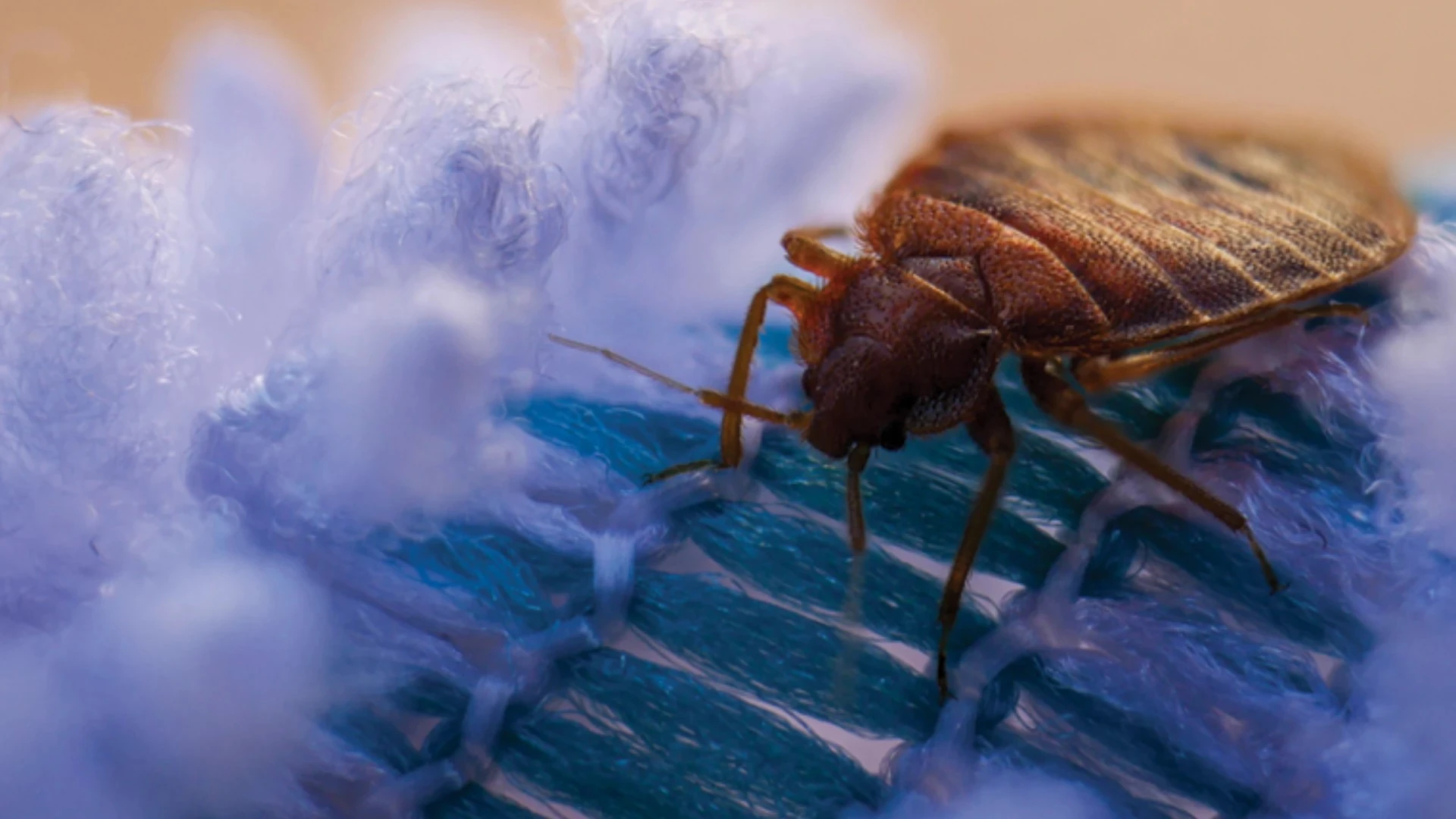Proper management of trash is the No. 1 issue in fly control. All of the filth flies (house flies, little house flies, blow flies, bottle flies and flesh flies) and fruit flies (Drosophila spp.) will breed in rotting garbage or are attracted to it.
Maggots of these flies can be found in almost every Dumpster. And the garbage itself is not the only issue; spilled food debris and the liquefied runoff from Dumpsters and other trash receptacles also breeds and attracts flies (and other pests as well, of course). Recycling bins also attract flies and should be managed carefully. Grease traps and grease barrels also can attract flies.
Garbage cans. Garbage cans should have plastic liners. The best cans are made of metal with swinging/closing lids. The cans should be cleaned regularly and accumulated garbage removed daily, more often if special outside events are occurring. Garbage cans should be inspected weekly to ensure that trash or liquid hasn’t accumulated between the trash bag and the base of the can. Recycling containers should be emptied regularly into a holding area that should be at least 100 feet away from any food areas. Garbage cans and recycling containers should be degreased and cleaned monthly (more often if necessary).
Dumpsters. Dumpsters are the No. 1 source of house fly problems around food facilities and a messy Dumpster can become a fly haven. Houseflies will zoom in to feed on the food and food scum in, on and around the Dumpster. But it’s not just house flies. Blow flies will be attracted to rotting meat and fish. Drosophila flies will breed in fermenting fluids from rotting fruits and vegetables.
Dumpsters should be located at least 100 feet from any food concessions. The Dumpster should be situated on a thick concrete pad and, if possible, should slope to a sanitary sewer drain to handle runoff from cleaning. Dumpster lids must be kept closed. If there’s so much trash that the lid can’t close, then a bigger container is necessary or more frequent trash pick ups should be scheduled. Additionally, make sure there are no rusted or leaking holes or seams. Dumpsters should be checked by staff twice daily and any trash picked up that didn’t end up inside the Dumpster.
You can’t control flies around Dumpsters with pesticides alone. Dumpster sanitation includes regular trash pick up and regular washing and degreasing of the Dumpster.
There are several different approaches to treating Dumpsters with pesticides. Make sure products are labeled for that use. Boric acid can be used in the bottom of the Dumpster. You can also treat the inside base of Dumpsters each month with a combination foaming agent, degreaser and residual insecticide.
You can use the Dumpster itself (especially if the customer has not kept up with the cleaning) as an attractant for your control measures. Fly landing zones on or near the Dumpster can be treated with a combination of an attractant and a microencapsulated or wettable powder. Spray the top rail edges, sides and covers of the Dumpster, as well as the pad below. Retreat the Dumpster with residual every 30 days in warm weather or every 60 days in cooler weather.
Consider installing outdoor fly traps around the Dumpster. Flies tend to rest on the exterior walls of the building adjacent to the Dumpster, but close to doors, drive-through windows and vents where heat and food smells attract them. Look for sites on the walls of the building where you can place fly traps or treat with a residual.
Fly baits can be used in protected sites near fly feeding sources. However, food competition with the garbage may make baits less effective.
Cleaning and grease removal. Spilled grease from grease traps and grease barrels is a powerful attractant for the house fly. Grease barrels must be maintained to minimize spilled grease.
Prime breeding and attractant sites inside a food facility include garbage cans, food-processing and -preparation equipment, dishwasher and surrounding area, floor drains, and floors under equipment. Food preparation surfaces should be cleaned promptly after use. Grease and food debris should be cleaned regularly from ovens, exhaust filters, grease traps, floor drains and any cracks and crevices that tend to accumulate debris. Enzyme cleaners can be used in floor drains and floors can be periodically washed down with boric acid cleaners. Grease can be removed by 1) the use of degreasers, and particularly degreasing foam followed by a wash down and 2) portable steam cleaning machines. The more often this is done, the less likely that flies will be attracted to the area.
*****
Sanitation is Key
to Solving Small Fly Problems
Fly business down the drain? It’s not a likely scenario, particularly if you’re talking about pesky small flies in commercial kitchens. Nor is it most likely in the literal sense, says Dr. Cisse Spragins, CEO and founder of Rockwell Labs Ltd, North Kansas City, Mo.
Even so, Spragins says some PMPs put drains at the top of the list of small fly breeding sites, frequently being "fixated on drains." This may be a focal point for drain flies, she said, but for other species, in many cases, the drains are not where it’s at.
"What we have found with all the work we’ve done in the field," said Spragins, "if it’s fruit flies, the drains are the problem maybe 20 percent of the time. Eighty percent it’s the stuff under everything else," she observed.
True, most fly problems do result from sanitation issues, of which a dirty drain is one. But other sanitation issues in commercial kitchens are more often responsible for infestations of black fruit flies, says Spragins. Common problem areas include under and behind kitchen equipment; voids around built-in coolers, ice machines or coolers with drip pans; poorly cleaned soda fountains or beer taps; and areas around garbage cans.
Power-washing is another small fly trigger, since it can force food matter into wall voids and cause degradation of wallboard not meant to be power-washed.
Rockwell Labs offers a number of products designed to help PMPs get at the sanitation issues that encourage small flies. The company’s line of InVade Bio Products features a blend of scum-eating microbes along with natural citrus oil that address the conducive conditions that are so often at the root of the problem.
InVade’s spore-formed Bacillus microbes offer enzymatic activity over a wide range of organic substances including proteins, fats and carbohydrates, as well as cellulose and urea. When the spores contact the target organic matter, they generate bacterial colonies that are designed to digest the organic matter.
InVade Bio Foam is a foaming microbial product with citrus oil designed to foam areas where fruit flies and drain flies breed, including cracks and crevices and drains. It’s ideal for use in commercial kitchen accounts but can also be used in residential accounts. The ultra-concentrated material is mixed with water and applied with a foamer to cracks, crevices and drains, thereby enhancing sanitation, the firm says. According to Rockwell Labs, the product curtails breeding when applied and over time digests the bio-film to prevent further breeding.
InVade Bio Cleaner is a liquid formulation of the scum-eating microbes plus citrus oil and other cleaners for mopping, deodorizing and hard-surface cleaning. The product can be sold to clients for use in mop water and power spray systems. Mopping with InVade Bio Cleaner will then push its microbes, cleaner and citrus oil into cracks in floor tiles, behind compromised baseboards and in drains to eat through the scum where flies breed. The product can also be diluted 50/50 with water and sprayed on contaminated surfaces. Rockwell Labs also offers InVade Bio Drain, a thickened microbial formula for direct application to drains.
For more information, visit www.rockwelllabs.com.
*****
Using Air to Your Advantage
It’s long been understood that strong air currents can keep flies at bay. That’s why air doors or curtains work to keep flying insects from entering warehouses, grocery stores, etc. The strong blast of air outcompetes their ability to fly.
Fly management can be as simple as installing fans. Strategically placed pedestal or box fans can be used outdoors on decks, patios or in sidewalk cafes. The fans will keep mosquitoes and other biting flies away while people are dining or enjoying other outdoor activities. The cooling air movement makes people feel more comfortable as well.
In restaurants, bars and other commercial accounts, small, rotating fans can be placed above salad bars, buffets, food prep areas, drink dispensers and other sites where fruit flies (Drosophila spp.) are a problem. The slight breeze from the fans will keep fruit flies from landing on food or surfaces. Most customers and employees won’t realize that the fans are playing a role in pest management; they’ll think the fans are for their comfort.
Remember, although fans can keep flies from landing on surfaces or people, they are not solving the fly problem. Flies will continue to breed unless you find the source of the problem and eliminate or treat it.
Fans can help eliminate fruit fly problems by drying out scummy, moist breeding sites in hard-to-reach areas. For example, a box fan placed at floor level can be used to keep the area under a commercial dishwasher dry.
Source: Techletter

Explore the June 2011 Issue
Check out more from this issue and find your next story to read.
Latest from Pest Control Technology
- Rentokil Terminix Expanded in Key Markets with 2024 Acquisitions
- In Memoriam: Joe Cavender
- Certus Acquires Green Wave Pest Solutions
- Liphatech Adds Alex Blahnik to Technical Team
- Do the Right Sting: Stinging Insect Identification, Management, and Safety
- VAGA's 8th Annual Veterans Thanksgiving Appreciation Dinner
- Clark's Blair Smith on the Response to Increased Dengue Fever Cases in Southern California
- WSDA, USDA Announce Eradication of Northern Giant Hornet from U.S.





